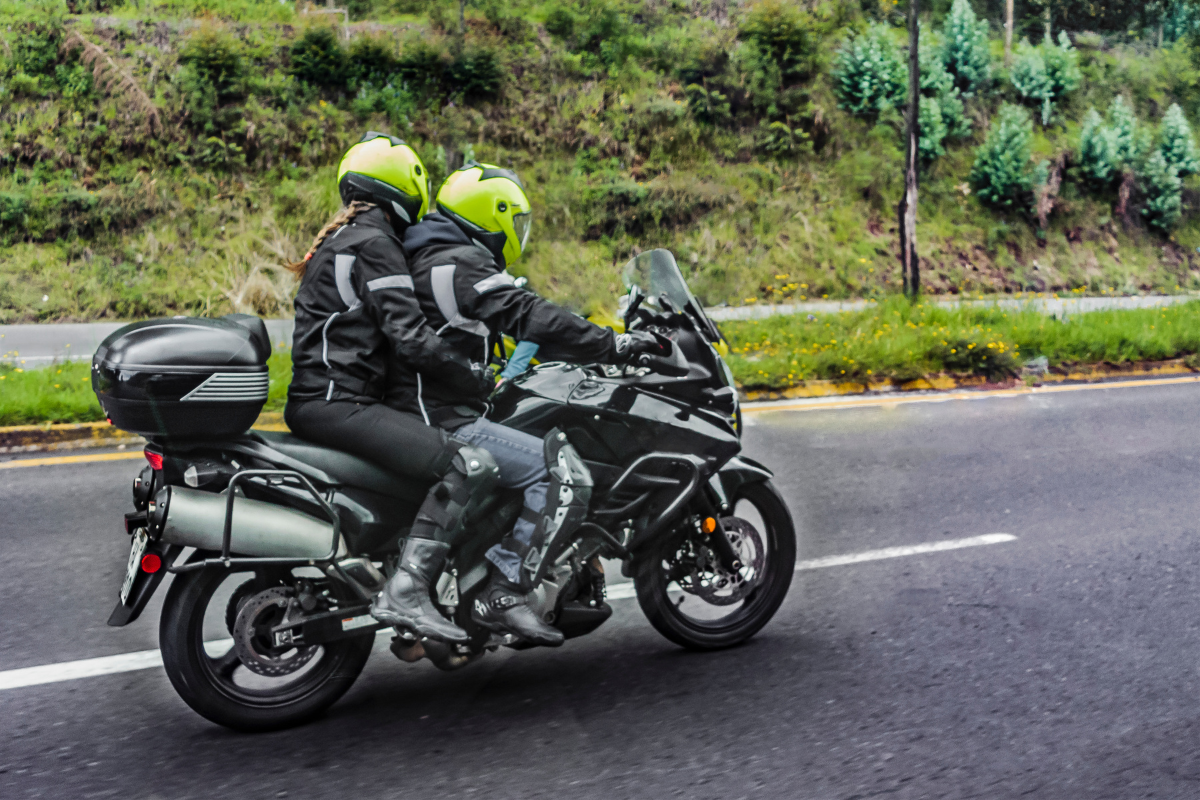How to be a Better Passenger on a Motorcycle.
Whether you're an experienced rider or completely new to motorcycles, being a good passenger requires awareness, coordination, and the right mindset. These seven essential tips will guide you through the basics—from choosing the right gear to understanding what to expect before hopping on the back seat.
When you sit on the back of someone’s motorcycle, you’re trusting them with your safety. But remember—it’s a team effort. A ride with two people requires cooperation, communication, and some learning along the way.
If you’re riding with someone new, take time to talk with them first:
- Make sure the rider has a valid motorcycle license and the right insurance to carry a passenger.
- It’s best not to ride with someone who’s new to riding, as having a passenger makes the bike handle differently, and new riders may struggle with that.
- Ideally, ride with someone who knows their bike well and has been riding it for a while.
- Never get on a bike with someone who’s been drinking—especially if they’ve had more than one or two drinks.
Even if you ride motorcycles yourself, being a passenger is different, and every rider has their own way of doing things. Take the time to understand how they ride.
The bike itself also matters:
- Is it a sport bike, cruiser, or touring bike? Each type feels different and might need a different seating or posture for the passenger.
- Ask the rider how they want you to get on the bike. Usually, you mount after the rider, but on some bigger bikes, the passenger may get on first. Find out what they prefer.
- Learn where the hot parts of the bike are—like the exhaust—so you don’t burn yourself. Always wear long pants, not shorts. One study showed that pants can cut the risk of exhaust burns nearly in half.
You’ll usually hold onto the rider, but some bikes have grab bars or passenger handles you can use for extra support. Lastly, remember: every bike is different, and so is every rider. Don’t be afraid to ask questions—especially when it comes to safety. There’s no such thing as a dumb question on a motorcycle.
Start off small.
Your first ride with someone shouldn’t be a long trip. It’s better to start small—like riding around a parking lot or going out for lunch. This helps both of you get used to riding together. Once you feel more comfortable, you can try longer trips, like a weekend ride to another city or a visit to a national park. Group rides can be fun, but they’re not the best choice for beginners. When you’re still learning, you may need to stop more often or make small adjustments. It’s best to ride together a few times and build trust before joining a group ride.

Be Ready for Turns and Braking
For new passengers, turning and braking can feel scary at first—but they’re easy to handle once you know what to do. When the bike goes through a turn, it leans to one side. This might feel strange, and you may want to sit straight or lean too much—but don’t do either. Just relax and lean naturally with the bike, looking over the rider’s shoulder in the direction of the turn. It’s a good idea to practice this in a parking lot before going out on the road.
Braking can also feel intense. It’s normal if you slide forward a bit and bump into the rider—that’s okay. A good rider knows to brake more slowly and smoothly when carrying a passenger.
One last thing: Never put your feet down unless the rider asks you to. Even when the bike is stopped, the rider controls the balance. If you suddenly stick your feet out, it can throw the bike off balance and surprise the rider.
Gear up or don’t ride.
You need every bit as much protection to ride a motorcycle as a passenger as you do to pilot the bike, since anything that happens to the rider can happen to the passenger. Read our blog on essential motorcycle gears. That protection should include:
- A helmet, preferably a full-face model that’s DOT, ECE or SNELL-approved.
A jacket of some kind. Motorcycle jackets are ideal because they’re made out of leather or other materials that resist wind and abrasion, but any thicker windproof jacket can be okay for shorter rides.
- A rain suit (or at the very least a poncho) if you’re going on a long enough trip that the weather may change.
- Boots with decent grip.
- Abrasion-resistant gloves.
- Long pants that will protect your legs from heat and abrasion. Many sportswear companies offer special motorcycle pants built specifically for riding comfort.
When it comes to motorcycle gear, never judge by looks alone. Just because a jacket looks like a biker jacket doesn’t mean it will protect you in a crash. Many stylish jackets lack the essential armor, abrasion resistance, and proper construction needed for real road protection.
Your safety depends on the quality of your gear, not just how cool it looks. If you're new to riding, it's smart to bring an experienced rider with you while shopping. They can help you spot the difference between fashion wear and true protective gear that meets safety standards.
⚠️ Remember: In a fall, it's the stitching, armor, and fabric that protect you—not the logo or the leather look.
Comfort is life.
A bike that you’re not comfortable on is a bike that’s not safe for you as a passenger. If you’re constantly having to shift position or adjust yourself, it can quickly turn into an unsafe situation.
The seat is the center of your comfort, so make sure you can ride on it without having to reposition yourself frequently. Seats come in many different styles, from relatively luxurious models with back and arm rests (more common on big-bodied touring bikes) to bare-bones styles that may not even have a backrest at all (more common on sport bikes.) A seat with insufficient back support can even cause you to slide off the bike during a sudden acceleration if you’re not careful.
It’s also possible that a seat that’s comfortable for a short ride isn’t good for a longer one—another reason to start with small trips and work your way up. Likewise, don’t settle for gear that isn’t as comfortable as you’d like, especially for a long ride. You don’t want to be a few hours into a road trip and discover that your new jacket really isn’t as comfortable as you thought. Usually, the long haul isn’t the best way to test new gear, so bring something that’s tried and true.
Stay Calm and Stay Still
Try to keep yourself relaxed and calm while riding as a passenger. Avoid sudden movements—especially when the bike is moving fast—as they can throw off the rider’s balance.
If you’re new to motorcycles, it might feel strange at first, but that’s completely normal. With a few short rides, you’ll start to feel more comfortable and confident.
Keep your muscles loose, not tense. Being stiff can make you react too strongly to bumps or quick movements. Practice staying still and in control, even if something unexpected happens—like a bug or small rock hitting your helmet. These things are part of the ride, so it’s best to stay calm and just go with the flow.
Communicate.
On anything other than a neighborhood ride, it’s unlikely you’ll be able to verbally communicate with the rider using just your voice. Thus, you need a communications system of some kind.
The classic way for passengers and riders to communicate is through a system of shoulder taps. Every rider-passenger team has a slightly different system, but a common one is the three-tap system: once to ask to slow down, two to ask to stop when possible and three to ask to stop immediately. If you and your rider are planning on using signals like these, go over them several times beforehand until you’re sure that you’re both on the same page.
Passenger riding is way more comfortable, more fun and more entertaining with an intercom. When you’re not talking to each other, you can easily stream music, listen to the radio or even answer a quick phone call. These intercom systems are also a big help for group rides, since they can help everyone coordinate and stay together without the need for hand signals.



